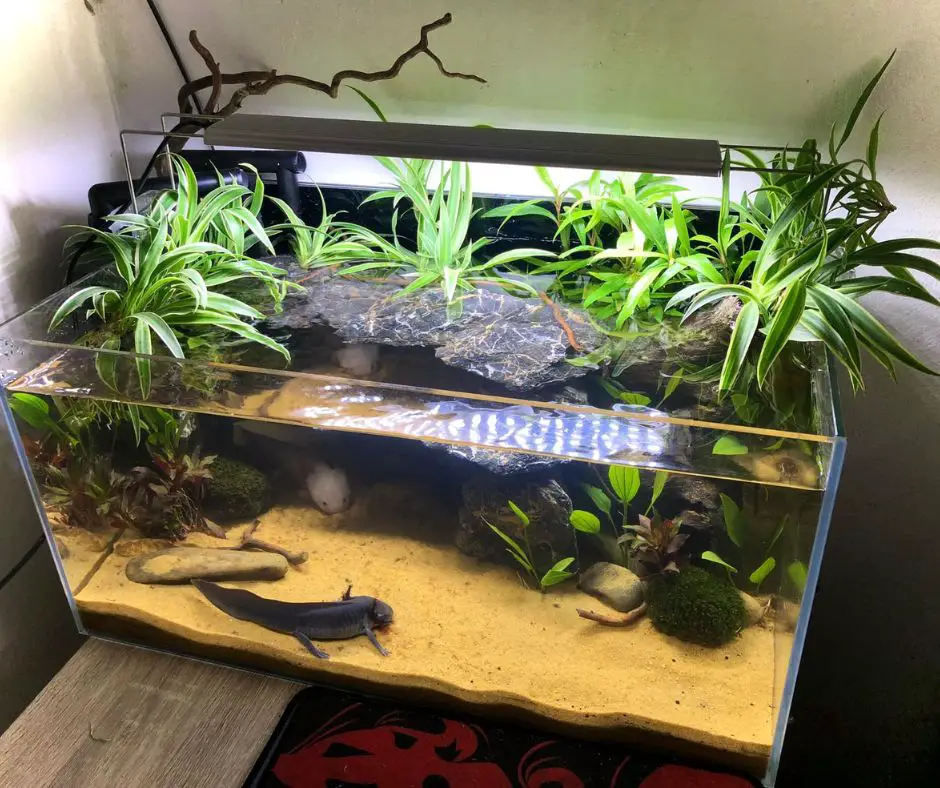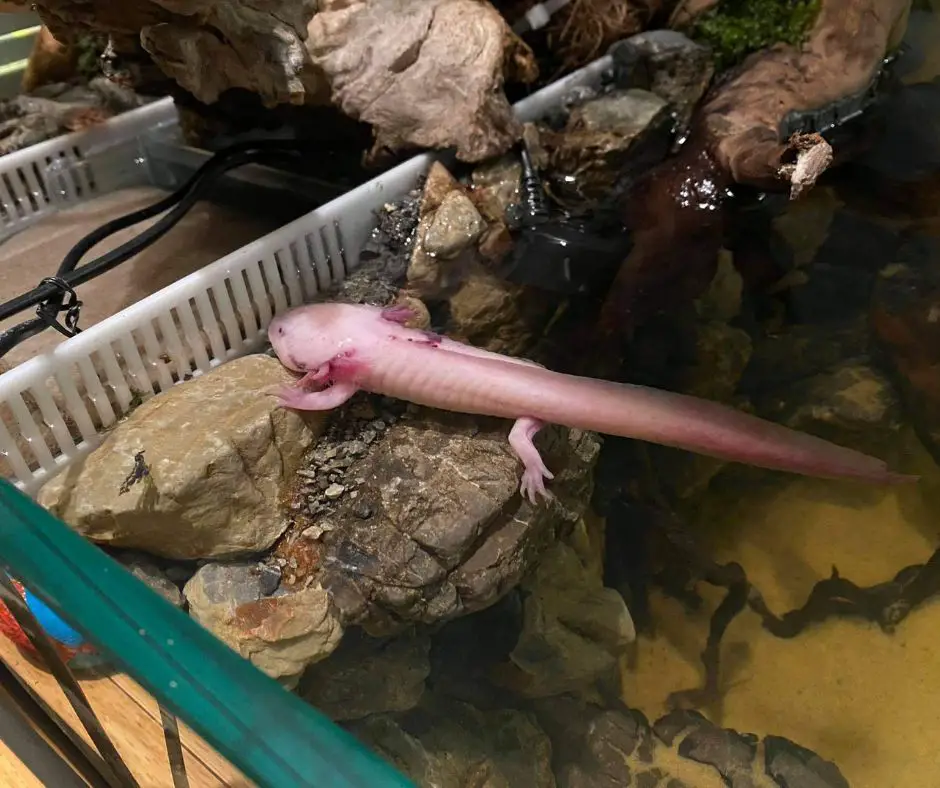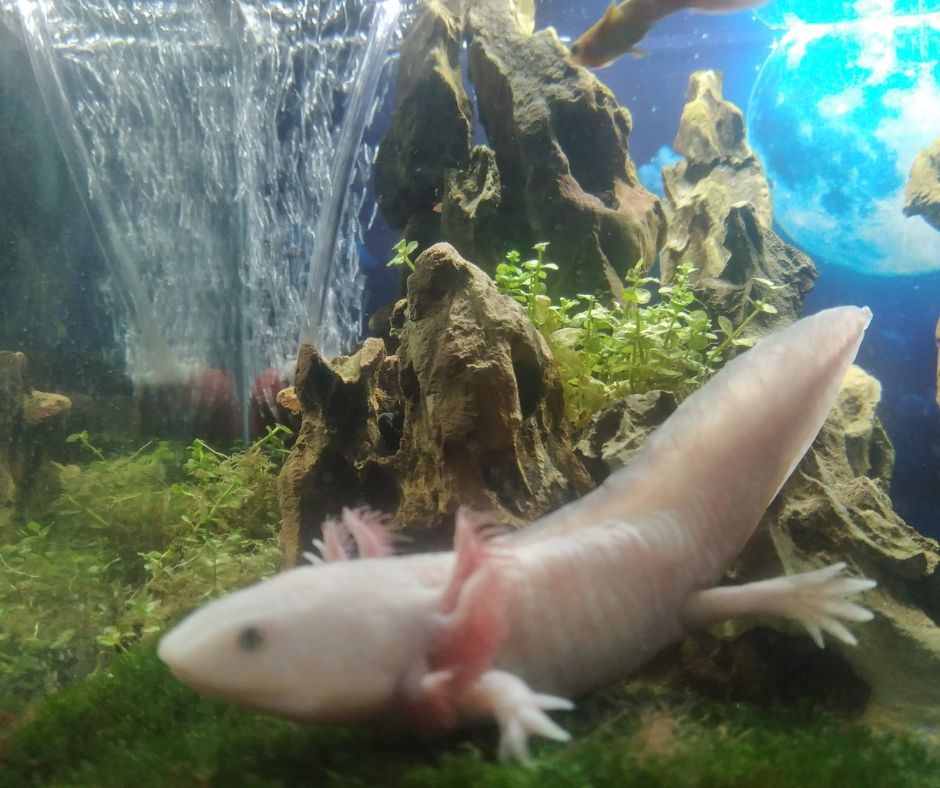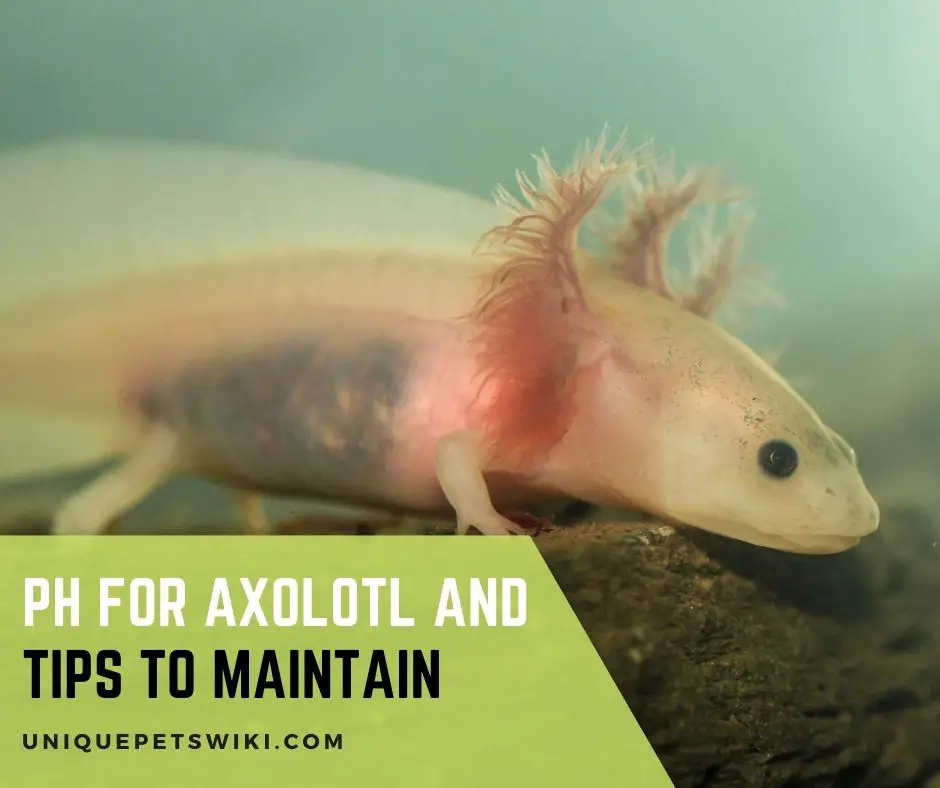Maintaining an ample water environment in an aquarium is critical to the pet’s health and longevity, and this a major topic of concern to both current and prospective axolotl owners.
This article assesses the issues that are crucial to maintenance of the right water pH for axolotl to ensure that your pet thrives.
New and existing axolotl owners will gain crucial insights on healthy pH balances to strive for, and some basic ways of telling whether your pet is comfortable in the water or not.
You will also be exposed to some remedies to consider when the alkalinity of your pet’s habitat is less or more than the ideal.
Contents
pH for Axolotl
pH measures the levels of alkalinity or acidity in a solution on a logarithmic scale, with the value of 7 being neutral. Lower values indicate acidity while higher ones show that the water is alkaline.
For healthy rearing of axolotls, the ideal water pH to maintain in an aquarium is between 7.4-7.6. However, the pet salamanders are known to have the ability to adapt in pH values falling between 6.5 to 8.0.
It is important to maintain a proper pH as the value may impact on the toxicity of ammonia and portend serious dangers to your pet.
Generally, pH readings in your tank may fluctuate depending on such issues as poor tank hygiene which leads to accumulation of organic materials. A dysfunctional filtration system also contributes to such fluctuations.
Fortunately, there are additives that can be introduced into the tank to adjust the pH to desirable levels.

How to Measure pH
To know the pH of your tank’s water, there are several water testing kits available in the market. Options such as API Water Test Kit are both readily available online and in stores.
There are testing kits for salty and fresh water testing, so it is important to select the right one.
When it comes to reading the results, the logarithmic values run from 1 to 14, with 7 being neutral and the value for pure water without dissolved nutrients.
Lower numbers signify acidic solutions, whereas higher values indicate alkalinity.
Generally, warm colors such as orange and red indicate acidity, whereas the cooler blues and green imply an alkaline status.
There are test strips which do not test the entirety of the pH spectrum from 1-14, but only allow testing a portion of the values. It is important to bear this in mind when making your purchase.
How to Lower pH in Axolotl Tank

When you frequently use testing kits to check for the levels of alkalinity in your aquarium, you will likely know in good time that your tank’s water pH is increasing to unsafe levels.
Moreover, your pets will communicate their distress through their bodies as well as behaviors, and you will know that it is time to intervene.
A pH measure going above 8.0 is potentially harmful to the axolotl, and the chances of ammonia toxicity are increased in such instances.
Some of the common signs of ammonia burn in your pet include gills falling off and consequently gasping for air, floating to the top of the tank, and a panicky style of swimming around.
The axolotl may also feed less than usual due to lack of appetite owing to discomfort from the burn.
It is important to act immediately if some of these signs manifest, since ammonia levels in water whose pH measures 8.0 or higher can easily kill the pet.
The higher the water pH, the more lethal the ammonia presence in it.
To lower the water pH to safe and healthier levels, reverse osmosis comes in handy in purifying the water, through filtering off the undesired ions.
Before this, you could potentially shift the pets into a different tank if one is available to reduce their exposure to ammonia.
Natural driftwood has also been known to help lower pH in aquaria, and the benefit is that it is a fairly natural process.
The tannins from the wood not only enhance oxygen levels in the water, but also help with the growth of good bacteria.
Such bacteria help with the decomposition of food crumbs and waste in the tank, thereby reducing ammonia concentration.
Adding peat moss or peat pellets to the filter will also gradually soften and lower the pH levels of water in the aquarium.
Some sources encourage prior soaking of the moss or pellets before locating them near the filter.
How to Raise pH in Axolotl Tank

Axolotls do well in pH levels of between 7.4 to 7.6. To maintain the ideal level of salinity, you may need to have water testing kits handy.
However, as already alluded to, your amphibian pet can also communicate that pH levels are lower or higher than the ideal.
If the water gets to pH levels lower than 7, it has essentially started to become acidic. The lower it falls, the higher the likelihood of the pet suffering from temporary anemia.
The key symptoms of this include discolored gills and a pale body color signaling lost pigmentation.
It may therefore be necessary to raise the pH levels in the tank by hardening the water through supplementation.
Added salts or Hotfreter’s, Steinberg’s solution, limestone or coral rock can all be used in this regard.
The process is as simple as filling a mesh media bag with crushed coral or dolomite gravel and placing it in the filter, allowing the carbonates to seep into the tank water.
This causes neutralization of the acidity, thereby raising the pH levels.
It might also be important to ensure that the oxygen concentration and water circulation in the tank is optimum to ensure the best results of the hardening process.
Adding an air stone is especially useful in this regard, as it helps with both these aspects, and ensures that the hardened water is well-aerated and circulating properly.
API Water Test Kit
- Contains one (1) API FRESHWATER MASTER TEST KIT 800-Test Freshwater Aquarium Water Master Test Kit, including 7 bottles of testing solutions, 1 color card and 4 glass tubes with cap
- Helps monitor water quality and prevent invisible water problems that can be harmful to fish and cause fish loss
- Accurately monitors 5 most vital water parameters levels in freshwater aquariums: pH, high range pH, ammonia, nitrite, nitrate
- Designed for use in freshwater aquariums only
- Use for weekly monitoring and when water or fish problems appear
Last update on 2022-12-30 / Affiliate links / Images from Amazon Product Advertising API
Tips to adjust pH
Changing the water is a quick way to get pH levels balanced. You can try a 20% water change then check the parameters again.
Additionally, you could harden the water to adjust its pH.
While you may feel the need to instantly enhance the water hardness and make your axolotls more comfortable, sudden changes may actually stress your beloved pets.
Ensure that the hardening is gradual by not introducing a lot of hardening materials at one go.
Generally, it is safe to aim to increase the pH levels at the rate of 0.5 units or less each day. Anything drastic may have negative results.
Tips to Maintain pH in Axolotl Tank
To maintain a stable pH reading, it is important to prepare the water and test its alkalinity levels before introducing it into the tank.
Different water sources come with varying nutrient concentrations, and this has an impact on the pH readings. It is important not to make any assumptions about the pH factor.
Moreover, just as you utilize driftwood to lower pH when the need arises, a calcium carbonate rock is useful in raising pH.
This implies the need to frequently test the water’s pH levels. Observing the behaviors of your pet salamanders may also signal to you the need to check on the water.
The most straightforward and rather obvious way to enhance a healthy balance of the water pH is by regularly changing the water.
Allowing for debris and waste to build up within the tank makes pH maintenance difficult.
With regular water change and tank cleaning, many amphibians and fishes will remain vibrant, healthy and active.
Nevertheless, when the need arises for enhancement of the pH, it is important not to drastically raise or lower the pH, as this may stress the pets even more.
Also read: Full Requirements & Water Conditions for Axolotl in Captivity
API PROPER pH 7.0 Freshwater Aquarium Water pH Stabilizer 8.8-Ounce Container
- Contains one (1) API PROPER pH 7.0 Freshwater Aquarium Water pH Stabilizer 8.8-Ounce Container
- Sets and stabilizes water pH to neutral to help keep fish healthy and colorful
- Removes toxic compounds from tap water to make it safe for fish
- Use exclusively in freshwater aquariums that do not contain live plants
- Use when setting up a new aquarium, adjusting pH in an established aquarium or changing water
Last update on 2022-12-29 / Affiliate links / Images from Amazon Product Advertising API
FAQs
Is 8.2 pH too high for Axolotl?
The ideal pH for axolotls is 7.4 to 7.6. While they can certainly survive in a pH of 8.2, anything higher than this is likely to affect them negatively.
Do axolotls like high pH?
This depends on what you consider to be high pH. Generally, axolotls thrive best in pH levels measuring between 7.4 to 7.6, even though they may well survive in an environment of 8.2. Levels higher than this are likely to cause distress in them.
How do you fix high pH?
The water may get too alkaline for the safety of the axolotls, and lowering the pH then becomes crucial.
Proper and regular cleaning of the tank, reducing aeration, installing a good filter and using driftwood may help in this regard.
You may also need to measure the pH levels in your tap water before use if this is the only option available to you.
Boiling tap water before use and allowing the chlorine to dissipate naturally from it may help reduce the compounds in it which contribute to elevated pH levels.
Is 0.25 ammonia safe for axolotls?
The safest ammonia levels for axolotls is 0.00ppm.
However, given the fact that variations from this is expected, care should be taken to ensure that the levels do not rise above 0.25. Anything above this is likely to begin the exposure to toxicity.
Wrapping Up
Knowing the right and conducive pH for your axolotl to thrive is key in ensuring their longevity.
Having water testing strips ready plays a key role in this, and so does usual changing of the water and cleaning up the tank.
Nevertheless, in the event that the pH rises or dips lower than what is healthy for your pets, there are additives that you can use in both scenarios to remedy the situation.
Peat moss and pellets as well as natural driftwood can be used to help regulate the water balance.
Knowing your pet’s usual mannerisms also comes in handy in telling if they are distressed in the water.
This implies the need to observe and bond with your axolotl so that any distress from unfavorable pH levels are detected as soon as possible.


